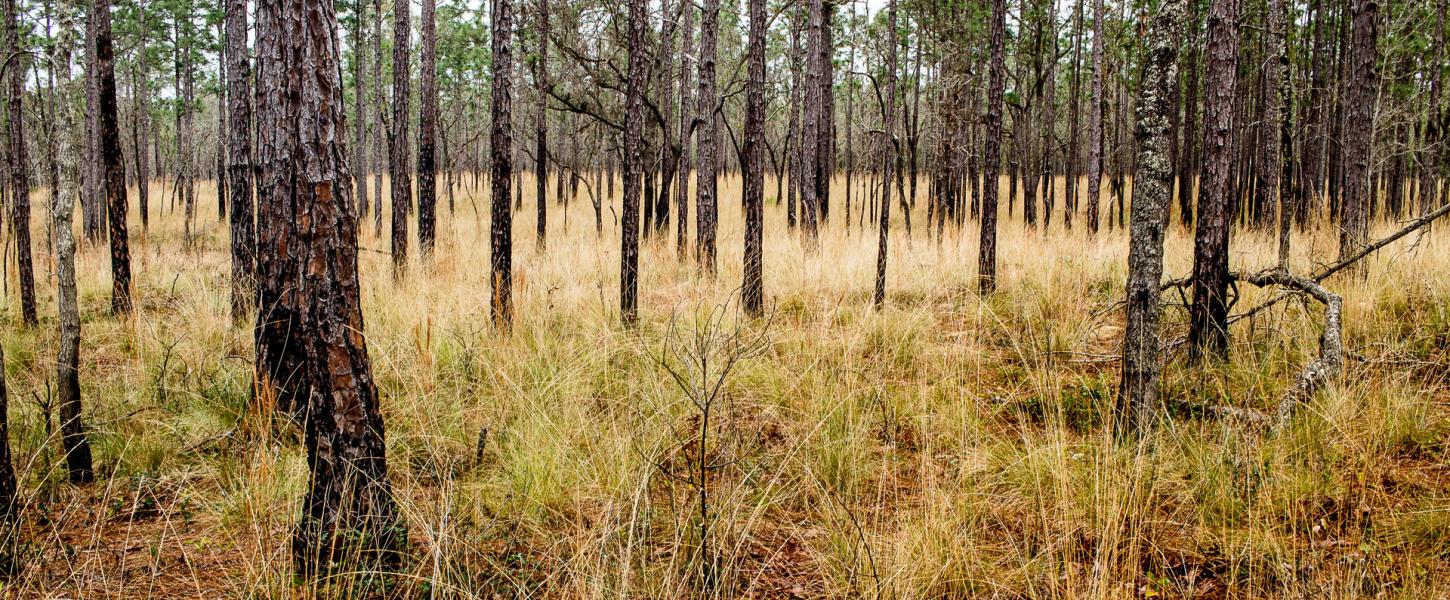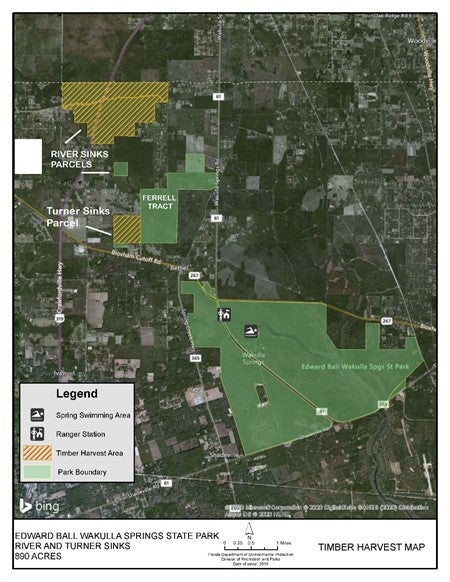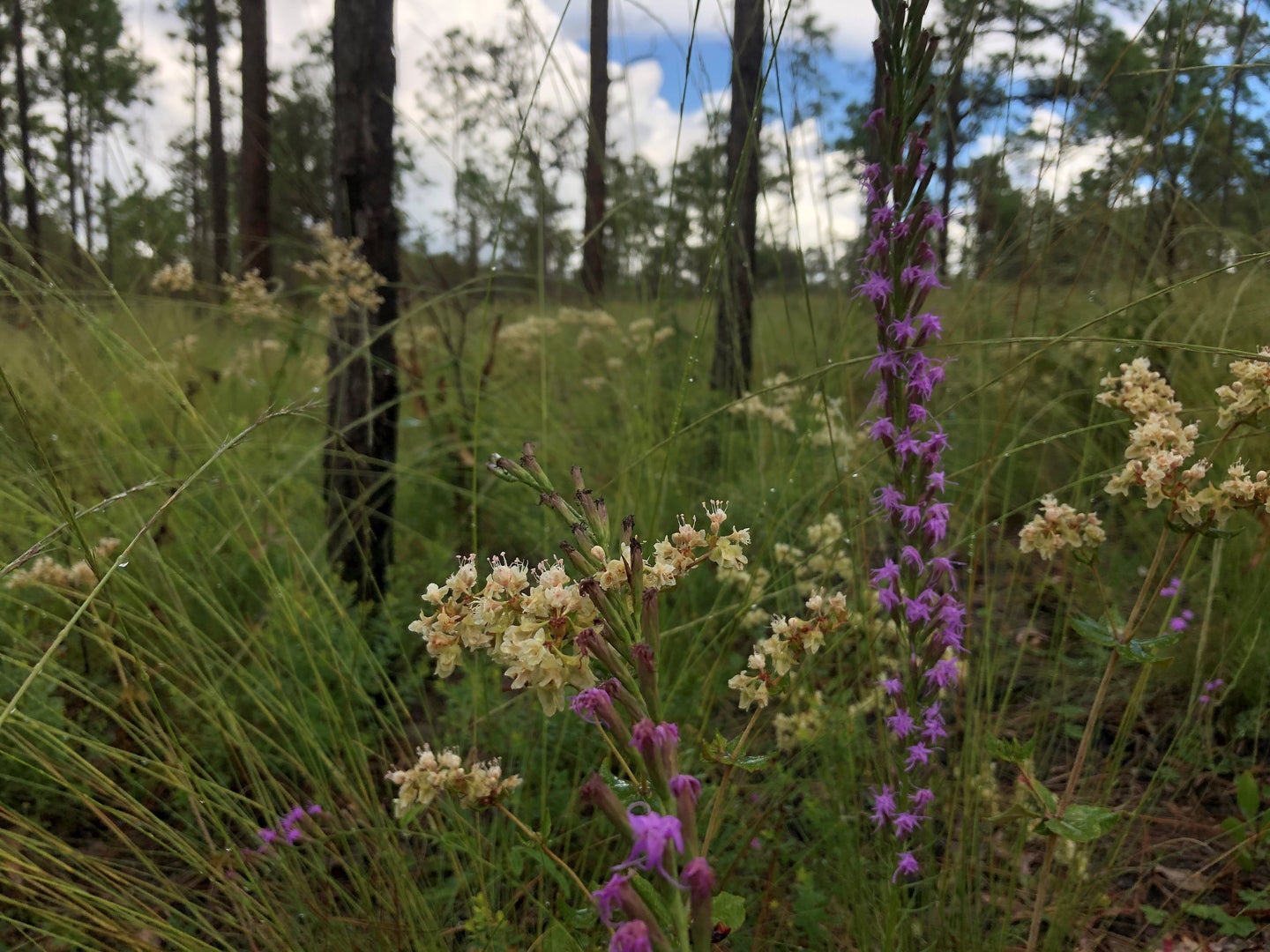Habitat Restoration in Progress

To the untrained eye, it can be difficult to tell a natural landscape from one that's been altered by people. However, these human-caused changes often can have negative impacts on wildlife and their natural habitats, decrease the overall health of an ecosystem and increase the chances for wildfires. Our state parks are havens for native wildlife, and to maintain healthy habitats, our parks sometimes need to restore certain landscapes to their original state through strategic, science-based and environmentally sound restoration efforts. This type of restoration project ensures the re-establishment of a healthy ecosystem overall, teeming with native flora and fauna.
Edward Ball Wakulla Springs State Park has started a multi-year resource restoration project at it River Sinks and Turner Sinks parcels. Like a doctor treating a patient, the park first had to diagnose the problem. Planted loblolly pines had replaced the natural upland pine community that once dominated those areas of the park. Restoring those areas to their natural state would provide habitat for deer, turkey, quail, gopher tortoise and Southeastern fox squirrel.
Once diagnosed, it’s time for treatment. The project includes thinning the loblolly pines on approximately 703 acres of the park. On 187 of those acres, the loblolly pines will be completely cut down and their stumps removed. Afterward, the surface will be raked and the site will be leveled. All of this is done to make space for native longleaf pines and wiregrass – staples of the upland pine community the park is trying to restore. The vegetation will be planted by park staff or contractors.
Restoring native landscapes is an involved and extensive process. While the loblolly pines are being removed, one can expect to see heavy equipment working within the park boundaries along U.S. Highway 319, as well as trucks entering and exiting the highway. Just like every doctor needs the proper tools, our park staff and contractors need specialized equipment to ensure that the treatments are effective and efficient.
Once the longleaf pines and wiregrass have been reintroduced, park staff will monitor the area and chart its growth and progress. As the trees grow and the ground cover thickens, wildflowers, the occasional oak and other plants will grow to fill the remaining space. Left unattended, these plants would overtake the wiregrass and other low-growing plants of the community, undoing the park’s hard work. To maintain the ecosystem’s long-term health, the park will use prescribed fires that mimic the natural wildfires to trim down the undergrowth. These controlled burns will clear out the oaks and other pesky plants while leaving the fire-resistant pines unharmed, an essential part of a healthy pine ecosystem.
The restoration project is just one part of an ongoing, multi-year restoration process for sites that have been affected by past forestry practices and fire exclusion. By monitoring and treating these areas, Wakulla Springs’ upland pines – and the wildlife that depend on them – can continue to thrive. Just like they always do in... the Real Florida℠.

Visitor Safety
For safety reasons, the trail at River Sinks and the Emerald Sink day-use area will be closed to the public while crews are operating heavy equipment in those areas.
The natural areas will look different at each stage of the restoration process. During the clearance, visitors may see heavy equipment. The equipment can be noisy while being operated. In the thinned area, visitors will see a more open forest and tree canopy, reduced stature of shrubs and some additional woody debris on the ground. In the clear-cut area, visitors will see bare land, stumps and piles of woody debris. After the harvest, passersby will notice a very open site with ongoing restoration activities of prescribed fire followed by planting of longleaf pines and groundcover plants.
Protecting Natural and Cultural Resources
Attention has been given to protect the archaeological and geological assets at the River Sinks and Turner Sinks parcels.
In 2019, professional archaeologists conducted an archaeological survey of the area. Care will be taken to minimize land disturbances near sinkholes to protect water quality. The River Sinks parcel provides recharge for the Wakulla Spring. The entire tract was surveyed to mark the GPS location of all sinkhole features. Each sinkhole is marked with a 200-foot buffer line where harvest activities are not allowed. Planted pines, however, will be thinned to the target basal area of 60 square feet inside the 200-foot buffer.
